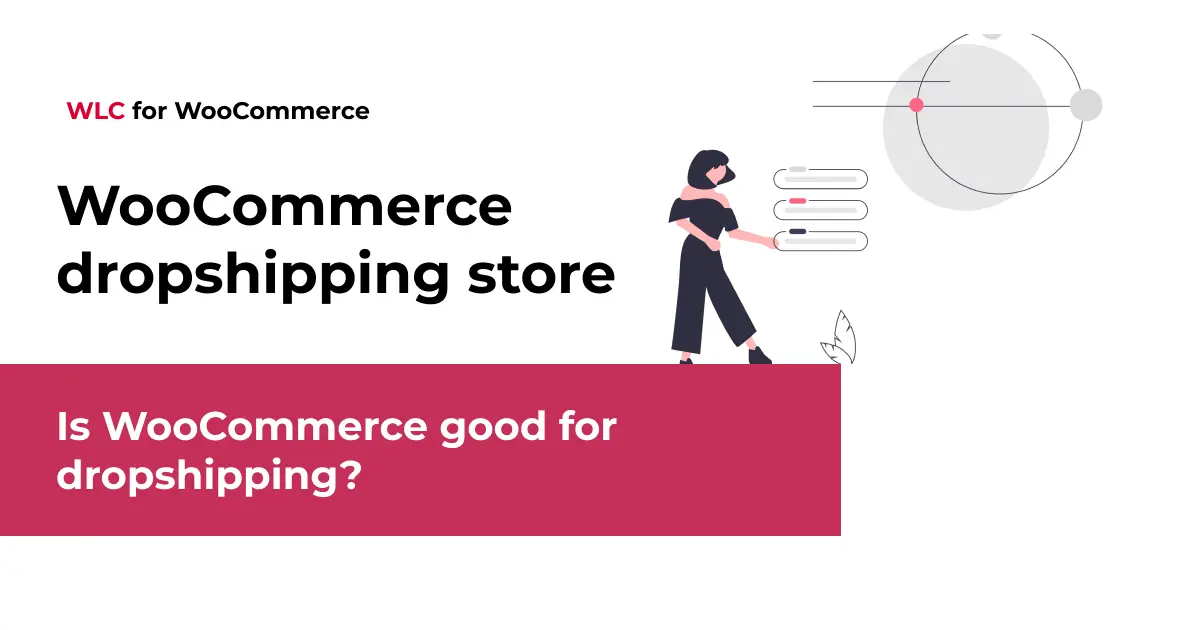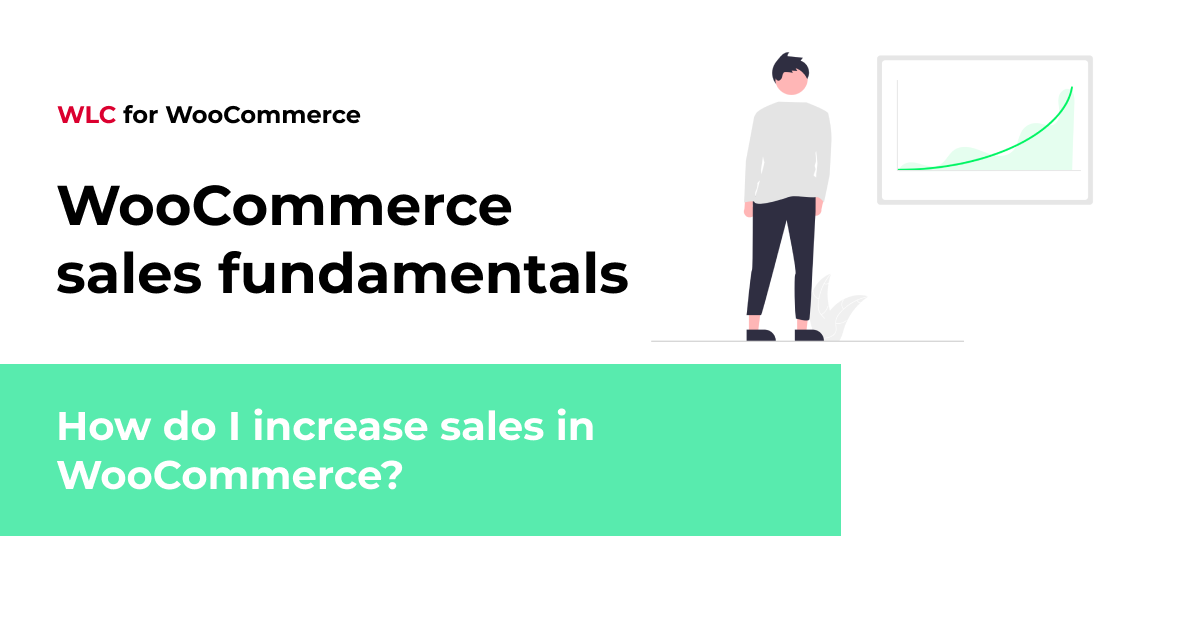Category: WooCommerce
Is WooCommerce good for dropshipping?

WooCommerce offers exceptional value for dropshipping businesses due to its flexibility, customization options, and complete ownership of your store data. As an open-source platform built on WordPress, it provides limitless adaptability without transaction fees. While it requires more technical setup than some alternatives, the platform delivers superior control over your dropshipping operations, extensive plugin options for supplier integration, and significant cost advantages for scaling businesses.
Is WooCommerce good for dropshipping?
When evaluating ecommerce platforms for a dropshipping venture, WooCommerce stands out as a highly adaptable solution. This WordPress plugin transforms a standard website into a powerful online store with complete control over every aspect of your operation. For dropshippers specifically, WooCommerce offers unlimited product listings, flexible shipping options, and extensive customization capabilities without charging transaction fees on your sales.
The open-source nature of WooCommerce creates a significant advantage – complete ownership and control of your dropshipping business. You can tailor the shopping experience, checkout process, and product displays to match your exact requirements. Additionally, the extensive ecosystem of plugins allows for seamless integration with various dropshipping suppliers and automation tools that streamline order fulfillment.
For entrepreneurs concerned about scalability, WooCommerce grows alongside your business without imposing artificial limitations on products or sales. This makes it particularly valuable for dropshippers planning to expand their product catalogs or enter multiple markets over time.
How does WooCommerce compare to Shopify for dropshipping?
The WooCommerce vs. Shopify debate centers around fundamentally different approaches to ecommerce. Shopify operates as a comprehensive Software-as-a-Service (SaaS) platform that handles hosting, security, and technical maintenance for a monthly fee. WooCommerce, conversely, is a free WordPress plugin requiring separate hosting but offering greater flexibility and control.
For dropshippers, pricing structure represents a critical difference. Shopify charges monthly subscription fees ($29-$299) plus transaction fees on each sale (unless using Shopify Payments). WooCommerce has no built-in transaction fees beyond your payment processor’s charges, though you’ll need to cover hosting costs separately. This pricing advantage becomes more pronounced as your sales volume increases.
Regarding ease of use, Shopify provides a more straightforward setup process with drag-and-drop functionality and 24/7 support. WooCommerce has a steeper learning curve but offers substantially more customization potential. This flexibility extends to dropshipping operations, where WooCommerce allows deeper integration with suppliers and more control over order fulfillment workflows.
Shopify excels with built-in multichannel selling capabilities for Amazon, eBay, and social media platforms. WooCommerce requires additional plugins for these integrations but can ultimately achieve the same functionality with more customization options.
What are the costs of running a WooCommerce dropshipping store?
Establishing an accurate budget for your WooCommerce dropshipping operation requires understanding several cost categories. Unlike all-inclusive platforms, WooCommerce expenses are more distributed but often more economical at scale.
Essential hosting costs typically range from $5-$50 monthly depending on your traffic expectations and performance requirements. Domain registration adds approximately $10-15 annually. While WordPress and the core WooCommerce plugin are free, most dropshipping stores require additional investments:
- Premium theme: $50-100 (one-time) for professional design and optimized customer experience
- Dropshipping integration plugins: $50-300 annually for supplier connections
- Payment gateway plugins: Potential monthly fees plus per-transaction costs (varies by provider)
- Security plugins: $50-200 annually for enhanced protection
- Performance optimization: $50-150 annually for caching and speed improvements
For store owners without technical expertise, developer assistance may be necessary for customization and maintenance. This could involve one-time setup costs or ongoing support agreements. While these expenses add up, the absence of per-transaction fees creates significant long-term savings compared to platforms that charge a percentage of each sale.
The flexibility of WooCommerce also means you can start with minimal investment and gradually add capabilities as your dropshipping business grows and generates revenue.
What plugins do I need for WooCommerce dropshipping?
Creating an efficient dropshipping operation with WooCommerce requires strategically selecting plugins that automate key processes and connect your store with suppliers. The right combination of extensions transforms a basic WooCommerce installation into a streamlined dropshipping business.
For product sourcing and supplier integration, these plugins are particularly valuable:
- AliDropship or WooDropship for AliExpress integration
- Dropshipping and Fulfillment for Aliexpress and WooCommerce by Webkul
- WooCommerce Dropshipping by ShopMaster
Order fulfillment automation represents another crucial category. These plugins automatically forward orders to your suppliers, reducing manual work and potential errors:
- WooCommerce AutomateWoo for workflow automation
- ELEX WooCommerce Dropshipping for order fulfillment
- Order Export for WooCommerce to streamline supplier communications
For inventory management, consider solutions that synchronize stock levels between suppliers and your store:
- Stock Manager for WooCommerce
- ATUM Inventory Management for WooCommerce
Additional essential plugins for most dropshipping operations include SEO tools like Yoast SEO, security enhancements such as Wordfence, and analytics solutions to track store performance. The modular nature of WooCommerce allows you to add functionality as needed rather than paying for features you don’t require.
How do I set up a dropshipping store with WooCommerce?
Launching your WooCommerce dropshipping store involves several key phases, beginning with technical setup and progressing through configuration and supplier integration.
Start by establishing your WordPress foundation:
- Select and purchase appropriate hosting (look for WooCommerce-optimized plans)
- Register your domain name
- Install WordPress through your host’s one-click installer
- Install and activate the WooCommerce plugin
- Complete the WooCommerce setup wizard (shipping zones, payment methods, etc.)
Next, configure your store’s appearance and functionality:
- Select and install a WooCommerce-compatible theme that aligns with your brand
- Customize your store design (logo, colors, typography)
- Configure essential pages (About, Contact, Terms, Privacy Policy)
- Set up tax calculations based on your business jurisdiction
For dropshipping-specific setup, you’ll need to:
- Install and configure your chosen supplier integration plugins
- Connect with dropshipping suppliers through the appropriate extensions
- Import products from your suppliers (or add them manually)
- Optimize product descriptions, images, and pricing
- Configure automated order fulfillment workflows
- Test the complete purchasing process from customer checkout to supplier notification
Before launching, finalize your payment gateways, shipping options, and tax settings to ensure smooth operation. Many successful store owners also implement additional plugins for SEO, marketing, and analytics to maximize visibility and performance from day one.
Can WooCommerce handle high-volume dropshipping stores?
WooCommerce’s scalability for high-volume dropshipping operations depends largely on proper configuration and hosting infrastructure. When optimized correctly, the platform can support stores processing hundreds or even thousands of daily orders.
Server requirements become increasingly important as transaction volume grows. While basic shared hosting may suffice for new stores, expanding dropshipping businesses should consider:
- VPS (Virtual Private Server) or dedicated hosting for improved performance
- Managed WordPress/WooCommerce hosting with built-in optimization
- Content Delivery Networks (CDNs) to improve global loading speeds
- Adequate server resources (RAM, processing power, SSD storage)
Beyond hosting, performance optimization techniques play a crucial role in maintaining speed and reliability under heavy loads:
- Implementing efficient caching solutions
- Optimizing product images for faster loading
- Utilizing database optimization plugins
- Enabling PHP optimization through proper server configuration
For high-volume dropshipping specifically, database management becomes essential as product catalogs and order histories grow. Regular maintenance and potentially custom development work may be necessary to maintain optimal performance at scale.
Unlike some SaaS platforms with built-in traffic limits or performance throttling, WooCommerce allows you to scale infrastructure to match your needs. This flexibility means the platform can handle high traffic volumes, provided you invest in appropriate hosting and optimization as your dropshipping business expands.
How do I find and connect with suppliers in WooCommerce?
Establishing reliable supplier relationships represents a foundational aspect of dropshipping success. WooCommerce provides multiple pathways for finding and integrating with product suppliers.
For AliExpress integration, which remains one of the most popular dropshipping approaches, several specialized plugins create seamless connections:
- AliDropship offers comprehensive AliExpress integration with automated order fulfillment
- WooDropship provides one-click product imports and order processing
- Dropshipp enables automated product syncing and price management
Beyond AliExpress, consider these alternative supplier marketplaces that work well with WooCommerce:
- Spocket connects with US and EU suppliers for faster shipping times
- Modalyst offers integration with independent brands and suppliers
- Inventory Source provides automated supplier connections across multiple niches
For more specialized product categories, direct relationships with suppliers often yield better margins and exclusivity. Many wholesalers now offer API connections or CSV feeds that can be implemented within WooCommerce through custom development or specialized plugins.
When evaluating potential suppliers, verify their reliability through test orders, communication responsiveness, and product quality checks before fully integrating them with your store. WooCommerce’s flexibility allows for connecting with multiple suppliers simultaneously, diversifying your product offerings while minimizing risk.
What are the limitations of using WooCommerce for dropshipping?
While WooCommerce offers tremendous advantages for dropshipping businesses, transparency about its limitations helps merchants make informed decisions. Several challenges deserve consideration before committing to this platform.
Technical complexity represents the most significant barrier for many entrepreneurs. Unlike turnkey solutions, WooCommerce requires:
- Understanding of WordPress fundamentals
- Management of hosting, security, and updates
- Configuration of multiple components rather than a unified system
- Potential troubleshooting of plugin conflicts
Ongoing maintenance responsibilities also create challenges for dropshippers without technical backgrounds. Regular tasks include:
- WordPress core, theme, and plugin updates
- Security monitoring and implementation
- Database optimization as orders accumulate
- Performance tuning as traffic grows
Performance issues may emerge without proper optimization. Common challenges include:
- Slower page loads compared to specialized ecommerce platforms
- Resource utilization spikes during high-traffic periods
- Potential scaling difficulties without proactive management
While many limitations can be addressed through proper development and management, they often require additional investment in either expertise or professional services. This creates an important tradeoff: greater flexibility and lower transaction fees versus increased responsibility for technical operation.
For dropshippers without technical backgrounds, working with a specialized developer for WooCommerce often represents the best approach to mitigate these limitations while capitalizing on the platform’s strengths.
Is WooCommerce dropshipping still profitable in 2025?
The profitability landscape for WooCommerce dropshipping continues to evolve in 2025, influenced by market dynamics, competition levels, and operational approaches. While the fundamental business model remains viable, success factors have shifted significantly.
Competition has intensified across most common dropshipping categories. General products sourced from mainstream suppliers face challenging conditions:
- Market saturation in popular niches
- Compressed profit margins on widely available products
- Increased advertising costs for common dropshipping categories
However, profit opportunities still exist through strategic approaches:
- Niche specialization with focused product selections
- Value-added services beyond basic product reselling
- Superior branding and customer experience
- Strategic supplier relationships with exclusive products
WooCommerce creates specific advantages for profitability in this environment:
- Absence of platform transaction fees preserves margins
- Greater customization enables differentiation from competitors
- Enhanced SEO capabilities reduce paid advertising dependence
- Content marketing integration facilitates valuable audience building
Realistic expectations for new entrants should acknowledge longer timeframes to profitability and the necessity of proper market research. The most successful WooCommerce dropshipping operations in 2025 typically focus on specific niches, invest in store quality and customer service, and develop deeper supplier relationships rather than pursuing rapid scaling with generic products.
WooCommerce dropshipping essential insights to remember
Throughout this exploration of WooCommerce for dropshipping, several key principles emerge that can guide your platform decision and implementation strategy.
WooCommerce delivers particular value through these core strengths:
- Complete ownership and control without platform dependency
- Absence of transaction fees preserving profit margins
- Unlimited customization possibilities for differentiation
- Seamless integration with content marketing through WordPress
- Extensive ecosystem of plugins for specialized functionality
The platform best serves dropshipping businesses that:
- Prioritize long-term growth over immediate simplicity
- Require extensive customization of the shopping experience
- Plan to scale beyond basic dropshipping into broader ecommerce
- Value content marketing as part of their business strategy
- Have access to technical resources or development partners
Implementation best practices include:
- Investing in quality hosting from the beginning
- Selecting a lightweight, optimized theme for performance
- Limiting plugins to essential functionality
- Establishing maintenance routines for updates and optimization
- Creating backup systems before making significant changes
For most dropshipping entrepreneurs, the decisive factor should be alignment between WooCommerce’s flexibility-centered approach and your business goals. If customization, ownership, and long-term cost efficiency matter more than immediate simplicity, WooCommerce provides a powerful foundation for building a sustainable and differentiated dropshipping operation with the best e-commerce platform for your specific needs.






